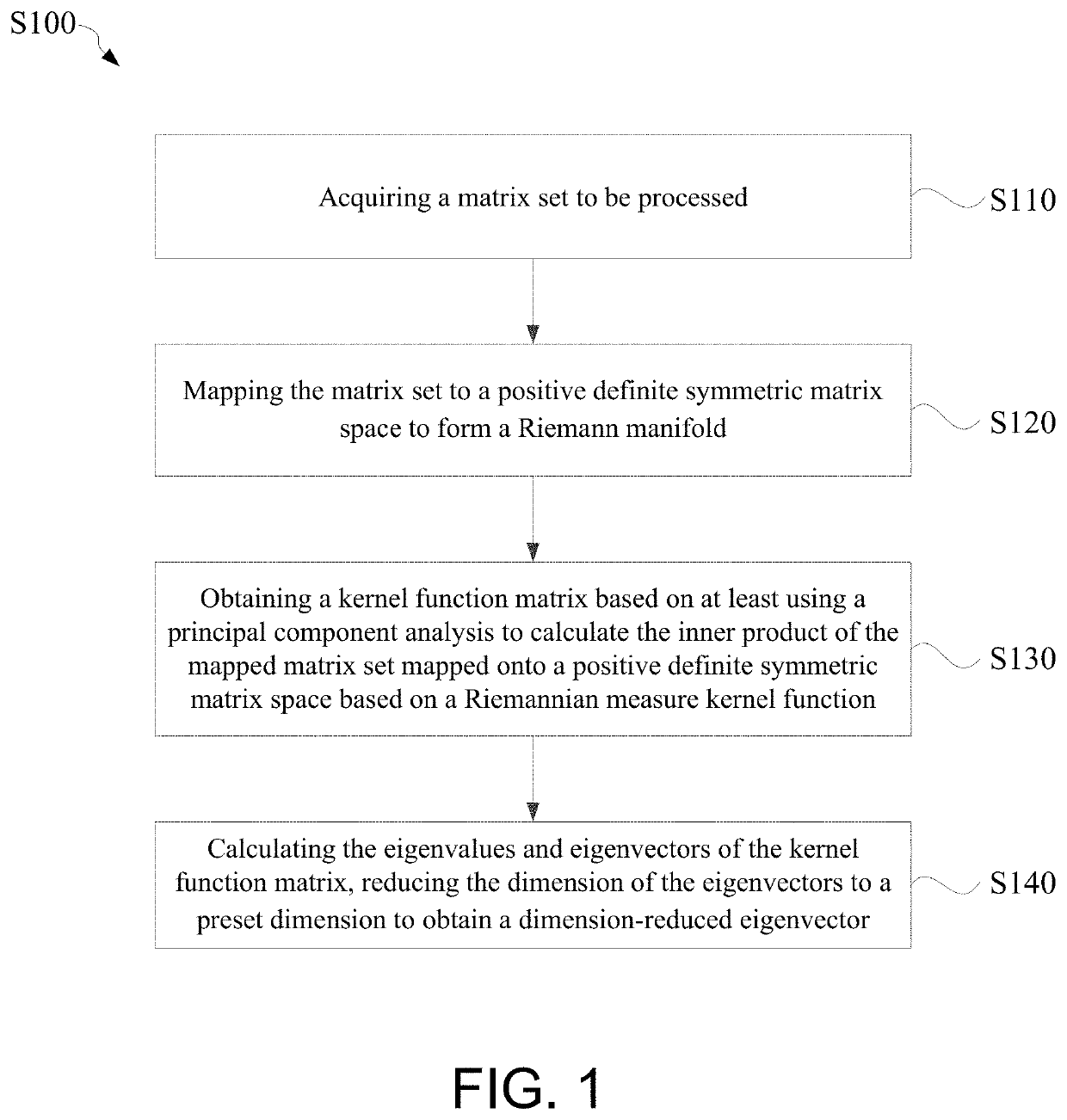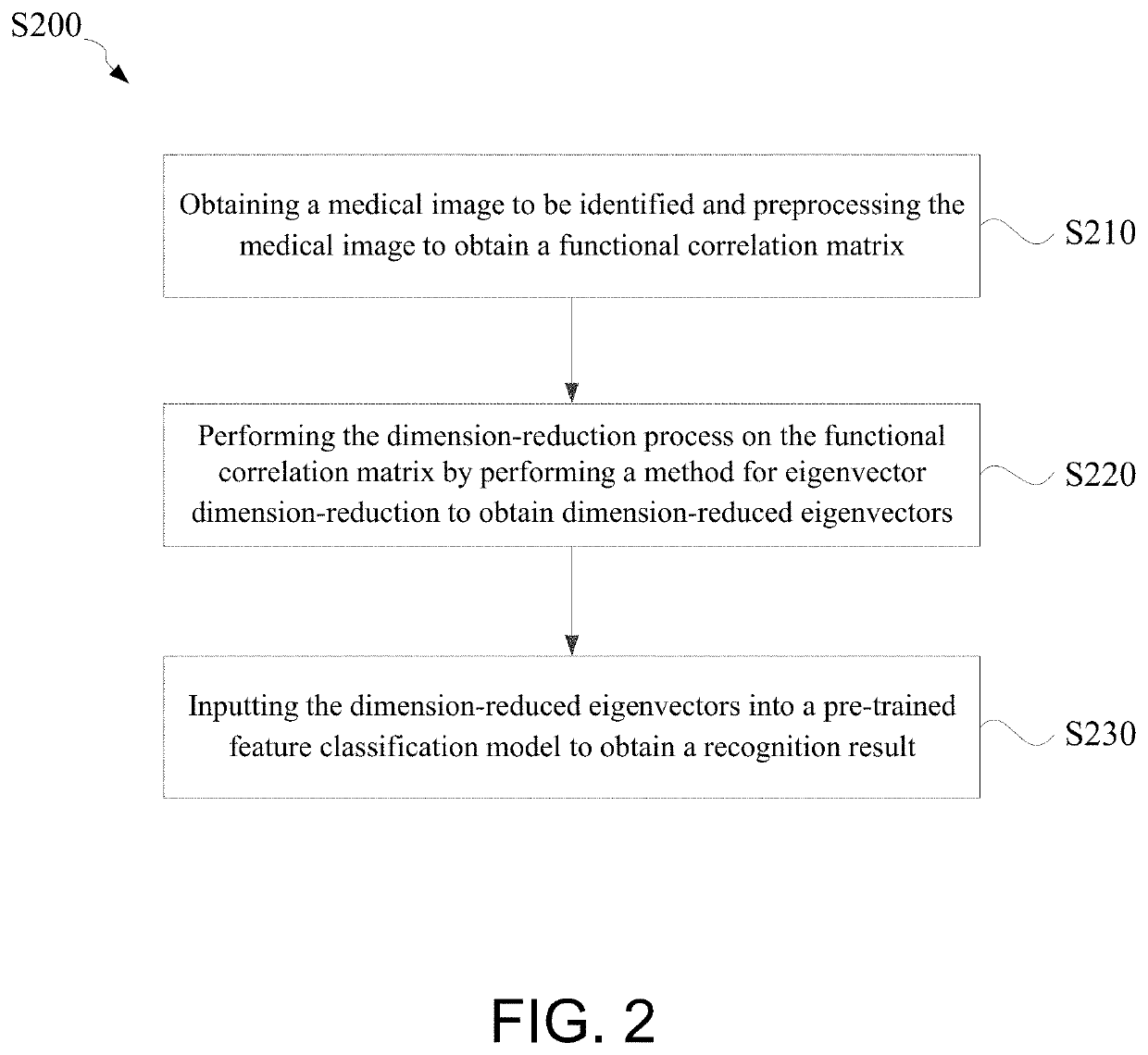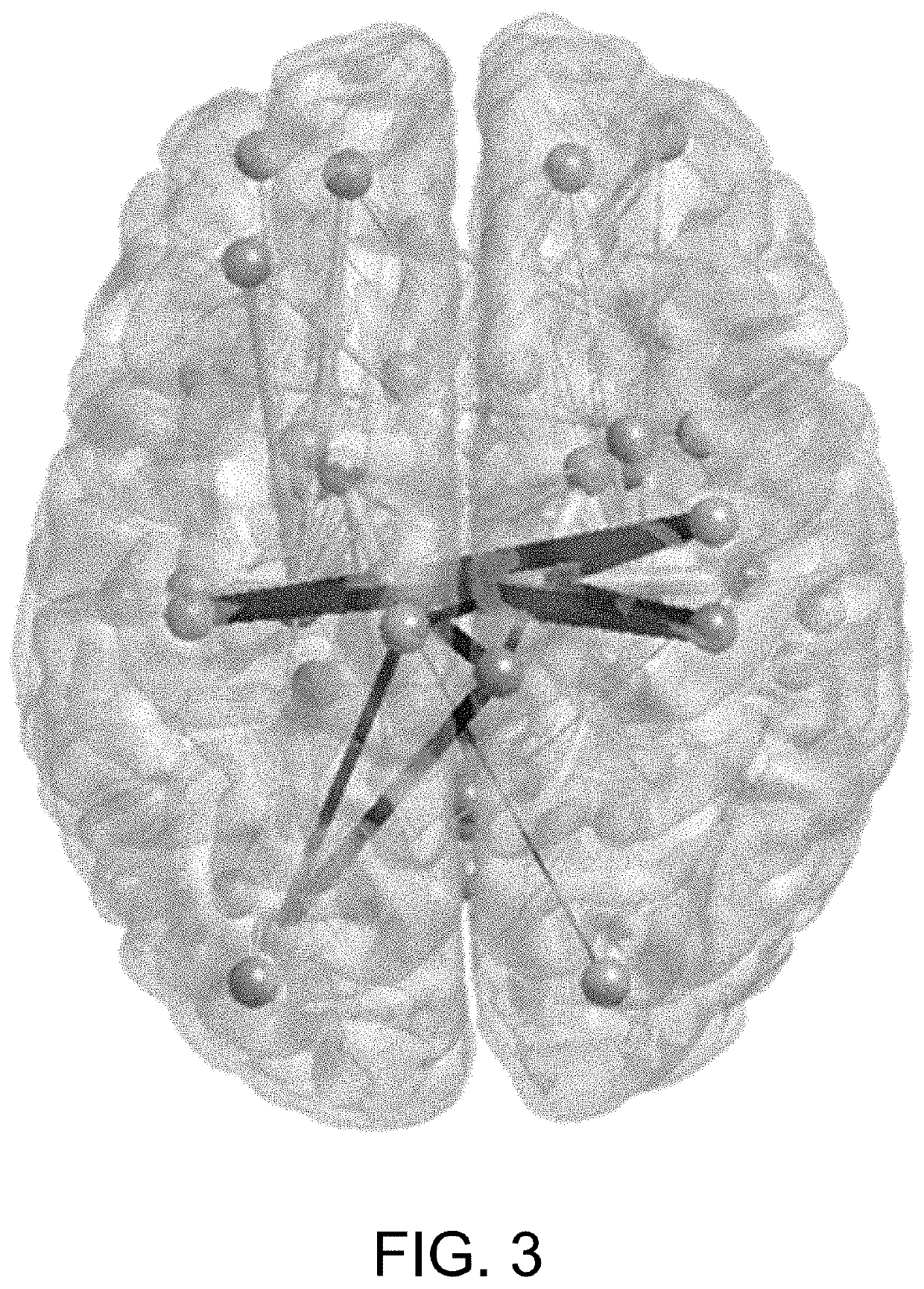Methods and devices for reducing dimension of eigenvectors
a technology of eigenvectors and dimensions, applied in the field of information processing, can solve problems affecting image processing, etc., and achieve the effect of reducing a number of eigenvectors and a wide range of applicability
- Summary
- Abstract
- Description
- Claims
- Application Information
AI Technical Summary
Benefits of technology
Problems solved by technology
Method used
Image
Examples
first embodiment
[0054]FIG. 1 is a simplified diagram showing a method S100 for eigenvector dimension reduction, according to some embodiments (e.g., a first embodiment) of the present invention. This diagram is merely an example, which should not unduly limit the scope of the claims. One of ordinary skill in the art would recognize many variations, alternatives, and modifications. The method may be applied to multi-dimension matrix data processing, such as image processing, which can be performed by an eigenvector dimension-reduction device, which can be configured, for example, in a server. The method S100 includes a process S110 of acquiring a matrix set to be processed, a process S120 of mapping the matrix set to a positive definite symmetric matrix space to form a Riemann manifold, a process S130 of obtaining a kernel function matrix based on at least using a principal component analysis to calculate the inner product of the mapped matrix set mapped onto a positive definite symmetric matrix spa...
second embodiment
[0063]FIG. 2 is a simplified diagram showing a method S200 for medical image recognition, according to some embodiments (e.g., a second embodiment) of the present invention. This diagram is merely an example, which should not unduly limit the scope of the claims. One of ordinary skill in the art would recognize many variations, alternatives, and modifications. In some examples, the method S200 is configured to be implemented based on the described method S100 for eigenvector dimension-reduction. In certain examples, the medical image is subjected to the method S100 for eigenvector dimension-reduction to extract one or more features (e.g., each represented by an eigenvector and a corresponding eigenvalue), which are analyzed against known correlations or connections with strong association or indication with a certain disease. The method S200 includes a process S210 of obtaining a medical image to be identified and preprocessing the medical image to obtain a functional correlation ma...
third embodiment
[0074]FIG. 7 is a simplified diagram showing a method S300 for training a feature classification model, according to some embodiments (e.g., a third embodiment) of the present invention. This diagram is merely an example, which should not unduly limit the scope of the claims. One of ordinary skill in the art would recognize many variations, alternatives, and modifications. The method S300 may be optimized for the method S200. The method S300 includes a process S310 of obtaining abnormal sample image data and normal sample image data, and preprocessing the abnormal sample image data and the normal sample image data to obtain a functional correlation matrix for each sample image data, a process S320 of using an eigenvector dimension-reduction method to reduce the dimension of the functional correlation matrix for each sample image data to obtain dimension-reduced eigenvectors for each sample image data, and generating a training sample set based on the dimension-reduced eigenvectors, ...
PUM
 Login to View More
Login to View More Abstract
Description
Claims
Application Information
 Login to View More
Login to View More - R&D
- Intellectual Property
- Life Sciences
- Materials
- Tech Scout
- Unparalleled Data Quality
- Higher Quality Content
- 60% Fewer Hallucinations
Browse by: Latest US Patents, China's latest patents, Technical Efficacy Thesaurus, Application Domain, Technology Topic, Popular Technical Reports.
© 2025 PatSnap. All rights reserved.Legal|Privacy policy|Modern Slavery Act Transparency Statement|Sitemap|About US| Contact US: help@patsnap.com



